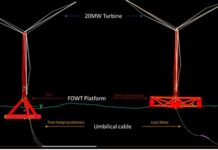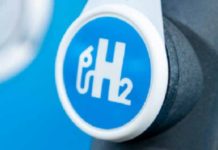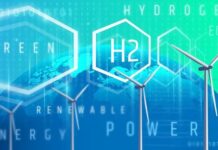The looming threat when it comes to climate change has motivated scientists across the world to look for cleaner choices to fossil fuels, and there are many who believe hydrogen is the best bet. Being an environmentally friendly energy resource, hydrogen- H2 can be used across vehicles and electric power plants sans releasing carbon dioxide into the atmosphere.
But storing and transporting H2 safely as well as efficiently remains a challenge, indeed.
Compressed gaseous hydrogen goes on to pose a significant risk of explosion as well as leakage, but liquid hydrogen must be maintained at very low temperatures, which is quite costly.
However, what if we could store the hydrogen directly in the molecular composition of other liquid or solid materials? This happened to be the focus of a team of scientists from Japan, who, in a very recent study published in the journal Small, went on to investigate the potential of hydrogen boride- HB sheets as practical hydrogen carriers.
Storing hydrogen within HB sheets is not a completely new concept, and numerous aspects of their potential applications as hydrogen carriers have been studied already.
But getting the hydrogen out of the sheets happens to be the tricky part. Heating at high temperatures or strong ultraviolet- UV illumination is needed so as to release hydrogen- H2 from HB sheets.
But both approaches have inherent issues, like high energy consumption or incomplete H2 release.
Hence, the team delved into a probable alternative, and that was electrochemical release.
Based on the mechanism of UV-induced H2 release from HB sheets, the team speculated that the electron injection from a cathode electrode into HB nanosheets by way of an electric power supply can very well be a superior way so as to release H2 compared to UV irradiation or heating.
Based on this theory, the researchers went on to disperse the HB sheets into acetonitrile, which is an organic solvent, and applied a controlled voltage to the dispersion. These experiments went on to reveal that almost all of the electrons injected into the electrochemical system were used in order to convert H+ ions from the HB sheets into H2 molecules.
Interestingly, the Faradaic efficiency of this process, which goes on to measure how much electrical energy gets converted into chemical energy, was more than 90%.
The team also went on to conduct isotope tracing experiments so as to confirm that the electrochemically released H2 came out of the HB sheets and not by way of some other chemical reaction.
Moreover, they also employed scanning electron microscopy as well as X-ray photoelectron spectroscopy so as to characterize the sheets before and after H2 release, yielding more insights into the underlying mechanisms of the process.
These findings go on to contribute to the development of safe as well as lightweight hydrogen carriers having low energy consumption.
But the team studied the dispersed form of the HB sheets in the published paper, and the present findings happen to be applicable to film or even bulk-based HB sheet systems for H2 release.
Furthermore, the team will go on to investigate the rechargeability of HB sheets post-dehydrogenation in a future study.
It is well to be noted that, with all the luck, this line of research is going to help pave the way for cleaner energy sources as well as more sustainable societies.
































